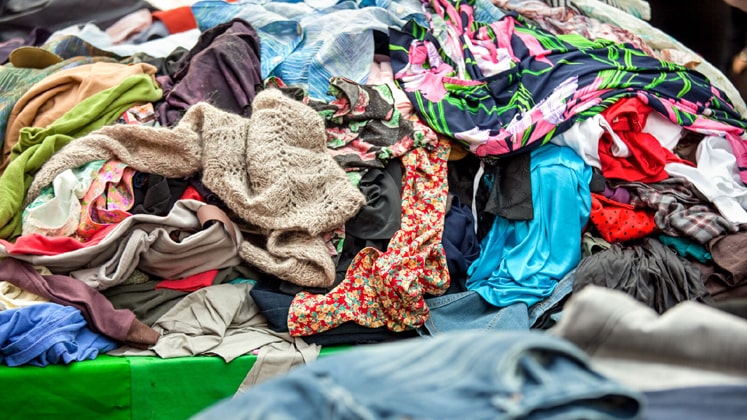
A novel technique enables researchers to chemically degrade used clothing and reuse polyester components to produce fire-resistant, anti-bacterial, or wrinkle-free coatings that may be put on garments and fabrics to make textiles more sustainable.
The unsustainable textile, clothing, and footwear industries, which collectively account for 20% of the world’s solid waste, have reason for optimism thanks to the proof-of-concept study. Many recyclers actually wind up illegally disposing of textiles as rubbish in Asia and Africa.
“We think that our clothes are recycled or reprocessed, but most of the time they are actually sent to other places as solid waste,” said Juan Hinestroza, the Rebecca Q. Morgan ’60 Professor of Fiber Science & Apparel Design and director of the Textiles Nanotechnology Laboratory in the College of Human Ecology. “Our main goal is to offer a pathway to reuse this material.”
The procedure of cutting textiles into pieces and chemically decomposing them into a soup of raw materials, dyes, additives, dirt, and esters is described in the paper, Upcycling of Dyed Polyester Fabrics into Copper-1, 4-Benzeedicarboxylate Metal-Organic Frameworks, published in the journal Industrial & Engineering Chemistry Research. The addition of a metal solution causes the polyester’s building blocks, which have an affinity for the metal, to preferentially bind metal compounds together to form tiny cages known as metal-organic frameworks, which sink to the bottom of the soup.
The cages that form are then used to make coatings, which may require minor structural tweaks to tailor each to specific uses. These might include coatings that make permanent press shirts that don’t wrinkle, antibacterial surgical gowns or scrubs, or baby or industrial clothes that require fire-retardant protection.
The paper’s first author is Yelin Ko, a doctorate candidate in the subject of human-centered design. This proof-of-principle of the method, known as controlled crystallisation, demonstrates that the polyester-derived linkers can seek out and attach to metal compounds in solution, despite the presence of other materials. Prior to this research, some people thought the dyes and impurities in the mixture would interfere with the process.
The study outlines a closed-loop method where waste materials can be recycled and help create a circular economy, a topic of interest for many Cornell sustainability researchers, according to Hinestroza.
Co-authors include Phillip Milner, assistant professor of chemistry and chemical biology in the College of Arts and Sciences, and Tyler Azbell, a doctoral student in Milner’s lab.






